When I left you, dear reader, I was stranded on 299 in the middle of a snap hard lockdown in SA. You’ll be delighted to know that the government actions and community response were (on this occasion) enough to squash the outbreak and so on schedule we emerged from our caves (like that movie The Croods ??? (*)). In the meantime, before you get to the title track of this blog post you’ll have to suffer through #300-#305, or skip through the dross at the top to August 13.
31st July
Of course I was champing at the bit to get to the 300 milestone, so at the first opportunity after we had been allowed out to play I jumped in the Kluger and headed for Kinchina, hoping the long-staying Pallid Cuckoo would have obeyed Premier Steven Marshall and stayed around. The weather did not seem great, with some heavy clouds around, but at least it was calm, unlike my previous visit to Kinchina when it was windy and I dipped.
In fact it was not the Pallid Cuckoo that scored me the even 300, but a fabulous Little Eagle. As I walked along the track to the zoo fence-line a big raptor took off from just a few metres away with a rabbit in its talons. I had evidently disturbed it munching away at a fresh kill. As I tracked in bins I could see this was a Little Eagle (which I have seen before at Kinchina, but not seen in 2021) and I quietly celebrated the milestone. It landed next to the fence about 50m ahead of me giving some decent views, but these were improved when it flew to a nearby tree.
I marched up and down along the fence several times since this was the reputedly the most reliable area for the cuckoo, but saw and heard nothing until it began to spit rain, so I retreated to the car just in time avoid a drenching. Although I considered calling it a day, by the time the rain eased I had resolved to give it a another shot. I walked back out with a large, bright umbrella in hand and strolled the fence-line several times. Again on the verge of giving up I tried some playback of a female Pallid Cuckoo contact call, and almost had to do a double-take when the unfamiliar sound on my app was answered with almost a perfect echo. I turned and noticed a female Pallid Cuckoo on top of the fence line where I had been scanning regularly for the last hour. She allowed quite close approach, seemingly much more interested in catching caterpillars from the reveg area on the zoo side of the fence than in me (or in avoiding me). Lovely! Number 301. Other nice birds noted included a Horsfields’ Bronze-cuckoo and a Southern Scrub-robin that clearly didn’t get the memo that they are supposed to skulk, and jumped right onto the track and ran towards me unprompted.






(*) for my non-Australian friends, this is reference to one of the more bizarre comments in a prime ministerial press conference, in a year that has produced many.
1st Aug
I’d not expected to get two weekend days in a row to bird, but rain on Sunday morning meant there was no bike ride with The Big Cogs, so I headed north of Goyder’s Line to escape the rain. Redbanks, near Burra, is a fantastic outback site that I had not been to in ages. It’s where I had my first Redthroat (2013), but also a site where I had found Rufous Fieldwren — and that was my quarry today. The further north you go in SA, the earlier spring comes, and Brown Songlarks were giving it some at the turnoff from Goyder Highway. As I pulled into the western carpark I immediately heard several very vocal Redthroats which were easily tracked down in the saltbush. In fact I saw Redthroats almost wherever I went in Redbanks today. I walked to the top of the hill on the main walking track to the picnic area and beyond a little to a spot near where I’d had the fieldwren previously and was excited to find a cooperative Rufous Fieldwren without too much difficulty.





I decided not to chase any other targets and drove back to Adelaide on World’s End Highway listening to the footy. At this time of year this highway and Thiele Highway are surrounded by gorgeous rolling green hills, providing a scenic backdrop to my latest road-trip. By the time I arrived back in Adelaide I decided to make a tiny detour down based on some gen from friend Sam Matthews: as soon as I turned off Main North Rd into the right street I spied a Barbary Dove on some electricity wires. This North African (pseudo) taxon has a small but firmly established population in Adelaide where it is tickable. In fact soon after we arrived in Adelaide, I birded with Frank O’Connor, who was passing through Adelaide and wanted to twitch one for his impressive Australian list.
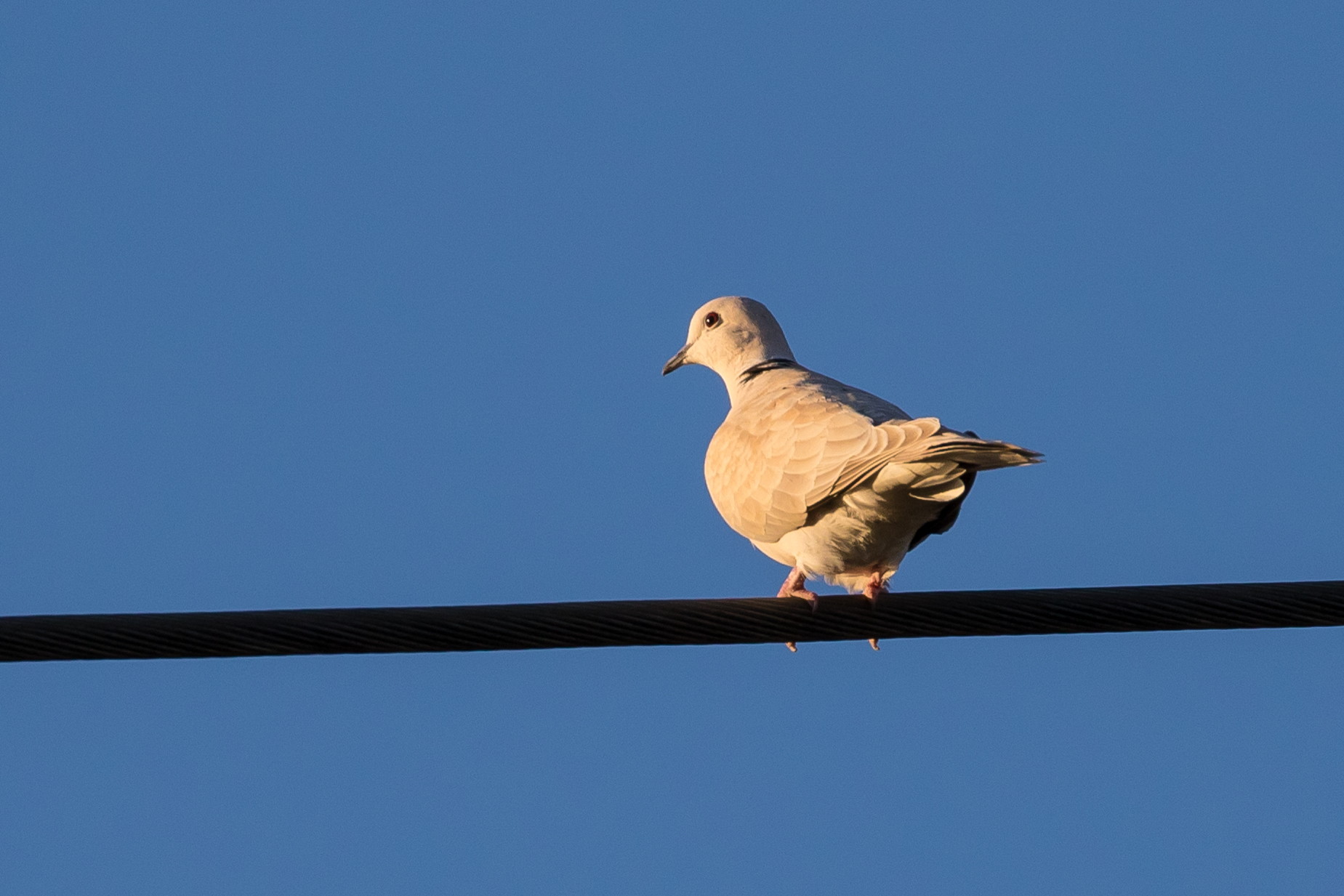
7th August
On the evening of the 6th August Mike and I decided it was time for our long-suffering wives to meet, so Mike and Dani came over for dinner. We mostly avoided talking birding the entire, very pleasant, evening. But right at the end Mike and I, perhaps emboldened by a few glasses of red each, cooked up a trip to Gluepot the next morning. I can’t recall, but I suspect there may have been a sigh in stereo from Nikki and Dani.
We both still needed Spotted Nightjar (seen there the week before by Jay Iwasaki) and Red-lored Whistler, while Mike was most keen to have look for Black-eared Miner, so those three were our targets. Oh, and Apostlebird was also still outstanding for me. It was an early — though not ridiculously early — start from mine at 4.30. We took the northerly, non-ferry route, to Gluepot and called into Morgan soon after dawn. Immediately we heard an Apostlebird call across from the bakery where we had parked, and a minute later we had tracked it down to a nest in a large conifer in the church grounds. Another 5 Apostlebirds were foraging by the roadside as we drove out of town. How annoying that they were not there two weeks ago when they would have been my 300th when Mike and I were hunting them at the end of our previous riverland jaunt (see blog post here).
We rolled past the Taylorville gate at around 8.30am. From here on, and along the tracks once in Gluepot, we saw a few flocks of Miners, but most were fly-overs and we had no chance to look for the subtle differences that distinguish pure or close-to-pure BEMs from hybrids. It did seem that wherever we stopped there was at least one Gilbert’s Whistler — I have never encountered so many. Towards the end of the day one whistler answered a burst of RLW playback with a perfect response, subtly different — slower and more melancholy than Gilbert’s. Only when we tracked it down did we find that this too, was a Gilbert’s.
We hung around long enough to drive the tracks hoping for a nightjar, but despite conditions seemingly being good for this tactic, we did not find any. At one point a Tawny Frogmouth that flew parallel with the car for 100m or so got the pulse rate up. Nice night-bird bird to see, but not the one we were after. Not for the first time, and probably with increasing frequency from now until 31st Dec, we’d had quite a good day birding end on a disappointing note because our birding was so targeted. I didn’t take a single photo all day.
We had been switching driving duties during the day, but I took over at Blanchetown with the intention of switching again at Truro. But Mike kept me entertained with a running commentary from the Olympics where Nicola McDermott was competing in the High Jump and the Boomers were playing their bronze-medal match. The updates were just frequent enough, and there was enough tension and excitement in both events, that I just carried on driving all the way to Mike’s place in the north-eastern suburbs of Adelaide.
8 August
I had intended not to bird today, but instead to go out for my usual weekend ride with the Big Cogs, But the long day on Saturday caused a (welcome) lie-in. Come early afternoon I was feeling guilty about missing the ride, and hankering for some more birding. So I did something I’ve never tried before and stuffed bins into the back pocket of my cycling jersey. I rode at a steady 30km/h or more to the mouth of the Torrens at West Beach. I must’ve looked a bit weird, wandering about the beach with my shoes off, lycra on, scanning the beach and dunes for Hooded Plover. These vulnerable birds seem to be making a minor comeback in SA, and over the last few years a couple of pairs have attempted to breed on some metropolitan beaches. The mouth of the Torrens, moreover, seemed this year to have been a bit of a winter roost with up to 13 birds reported. Today my luck was in — though I didn’t see those large numbers, I found a pair in the dunes on the south side of the river, seen well enough even for some poor, but identifiable phone video (I won’t subject you to that, but here’s a link to my strava activity).
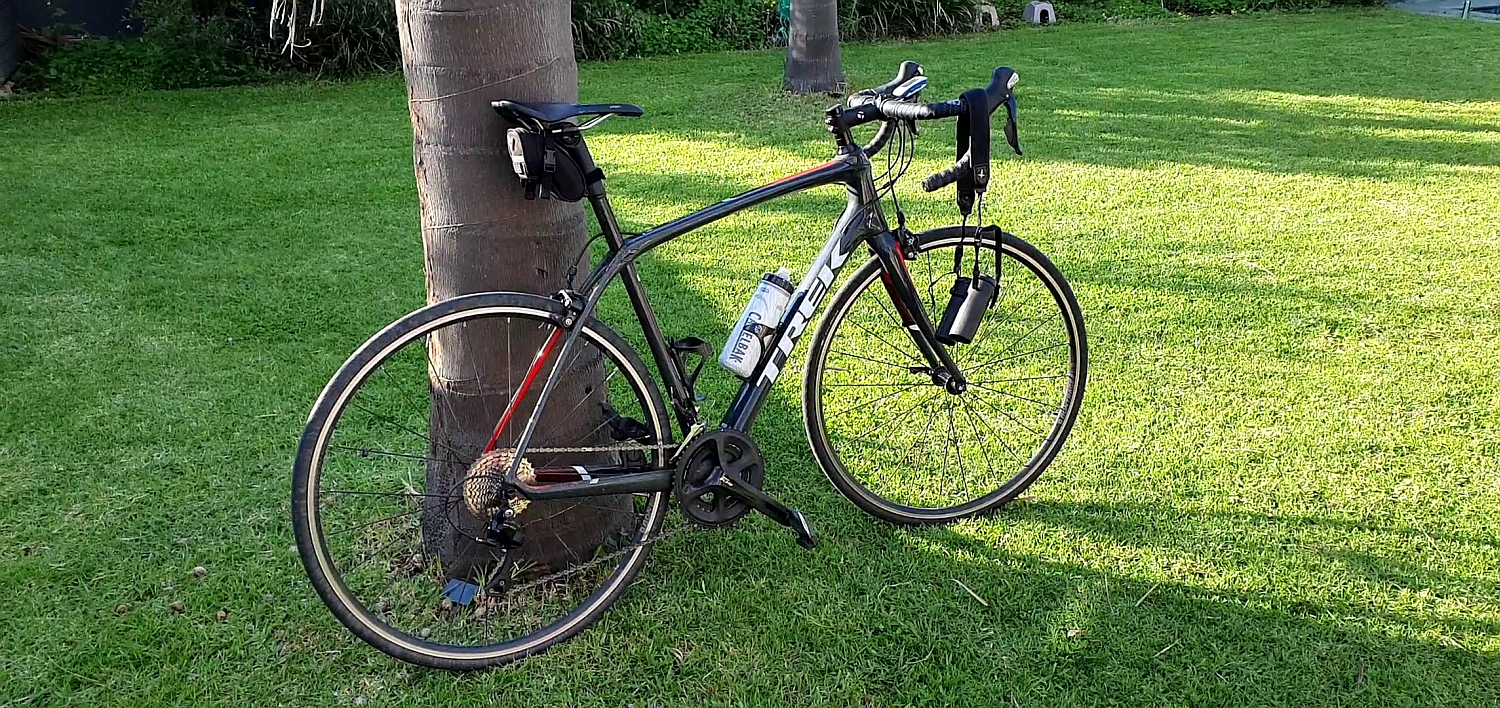
[A sad postscript to this sighting: this pair laid eggs in the spring, after I had visited. But the eggs were predated by a dog or fox in mid-September]
13-21 August
I had been looking forward to the weekend of 14/15 August for some time; I was booked onto the Port Mac pelagic and this would be a decent shot at some winter sea birds, including some of the remaining SA lifers available to me. In fact on the corresponding trip in 2020 (which I was sadly not on) they’d had Blue Petrel so expectation was high. But email came through on Thursday to say that Sunday’s forecast had deteriorated. The trip was off :-(.
As has become customary this year, I had been due to share the drive down with Mike (who is booked on every pelagic for the year). We considered various alternatives, including spending the weekend with our respective families (yeah, right! ;-)), but given that we both had a weekend pass-out we decided to head south anyway. I still needed to see a few species down there which were heard-only from earlier in the year. Although there was not much available for Mike, he was willing to tag along in the absence of another plan that would be more productive Big Year-wise, and there was always a chance of running into a rarity.
A slightly early knock-off to Friday had us battling the Friday traffic in Adelaide then driving a now well-worn route along the SE freeway and Dukes Hwy. This time, however, instead of turning off at Keith we carried on to Bordertown, so named because of its proximity to the SA/Vic border. In the pub we joined Paul Coddington for dinner (he was also booked on the cancelled pelagic and had driven down separately), then headed out to look for Bush Stone-curlew. This would not be a year tick — seen in Qld in April — but would a state tick, and therefore a year tick for me. I have heard them in Flinders Chase on KI (KI is fox free), but Bordertown is almost the last remaining reliable site on the SA mainland.
We walked the perimeter of the Bordertown Wildlife Park, noting lots of Kangaroos including a few white ones for which the park is well-known, but saw no sign of any BSCs. Likewise a sweep through the cemetery and a few other allegedly regular spots yielded nothing. Fortunately on the other side of the town at Memorial Park we stopped and almost immediately heard the wailing cry. A few minutes later we had tracked down an excellent Bush Stone-curlew in our torch-light. We retired to the pub where disappointingly the bar had already closed, though this was probably a good thing because we had an early start lined up for Saturday.
I woke predawn to the sound of Curlews calling from what seemed to be park opposite the pub.
First stop, about 45min before dawn, was Cockatoo Lake where we listened for and played the call of Barking Owl. Bob Green had seen one here while camping several weeks back and though this was a very low probability option we decided it was worth it as a minor diversion on our way to the far south east. Unsurprisingly we saw/heard nothing.
Next on the list was a date with Bob himself down at Pick Swamp where I hoped to get some kind of view of Olive Whistler so I could upgrade it from heard to seen for the year. It’s a 2km walk from the carpark at Pick Swamp to our Olive Whistler site [a previous version of this blog over-estimated 3-4km but this was poo-pooed by Bob — maybe it just felt that way]. Mike and I had dipped in Feb two days in a row (see Valentine’s Pelagic) and those walks were “enlivened” by the fear of tiger snakes under every clump of grass. Today the fields were very wet and variously flooded from the (very welcome) dousing the south east has had this winter. This mean there was little risk of sneks at this time of year, but although cold wet feet are not life-threatening, they are still unpleasant. Your Gen X and pair of Boomer heroes trudged our way through the sodden fields and vaulted electric fences to avoid the worst of the flooding. A pair of Peregrine Falcons posed atmospherically on the crags to the north of the swamp.

Bob had just finished a formal survey and was waiting for us at the site, but although an Olive Whistler had been singing on top of a bush barely 30minutes earlier when we got the carpark — we even heard it through Mike’s phone as he chatted to Bob — now it was silent and invisible. Mike got a glimpse as it flew across the track in front of him from one dense stand to another, but he was several metres away and the bird had no interest in our playback. I suspect that they are pretty good at counting, and will skulk if there are more than 1-2 people present. We made a bee-line for Bob’s car when it started to rain, and he was kind enough to give us a lift back to the carpark. We picked up Australasian Bittern at the southern edge of the swamp, and Striated Fieldwren by the shed next to the carpark. Both great birds, though not needed by either Mike or myself for our respective year lists.

Late morning we did a 3km loop walk through Dry Creek Reserve very close to the border with Victoria. We failed to find or even hear my main target, Pied Currawong, but had a nice encounter with Bassian Thrush and Golden Whistler (youngi). The taxonomy of Golden Whistler seems to be one that is in regular flux, and most recently DNA studies have lumped the main SA sub-species fuliginosa with the western form instead of the eastern form, so now Western Whistler is the common form found in SA. Overnight this has given us two Golden Whistler types in SA because the youngi sub-species, still Golden Whistler, makes it over the border into SA in a few places, most notably (and with least overlap) here in the far south-east. It is the females that best distinguish these, with the female of youngi having a largely pale beige front, while female fuliginosa has a darker brownish breast. The former is clear in my pics below. Likewise all all black tail — as seen in the male below — is also indicative of youngi.



Enough taxonomic bullshit and back on with the tale: we decided to head back to Port Mac, grab some lunch and try to find some White-fronted Terns, which I needed still for the year. This turned out to be a somewhat fateful decision for reasons that will become clear.
There were a a few dozen Crested Terns at the end of the jetty, and viewed distantly we could see that a couple were smaller with black bills, likely White-fronted Terns. To get a better view we moved gradually down the jetty and took photos of three birds. At the time, one of these seemed interesting for its noticeably shorter legs and we tried hard to turn this into an Arctic Tern, though annoyingly soon after we first spotted it, it moved behind a post and was mostly obscured. Another bird over to the left was clearly adult winter White-fronted (not the white tips and edges to the primaries that create a white line on the folded wings — see left-most bird below), while the bird with scalloping on its wings was presumed to be an immature White-fronted. Having satisfied ourselves with these and decided after consulting experts on #teammike2021 that the middle bird was also a WFT, we located several more WFT on a small groyne at the eastern end of the harbour.
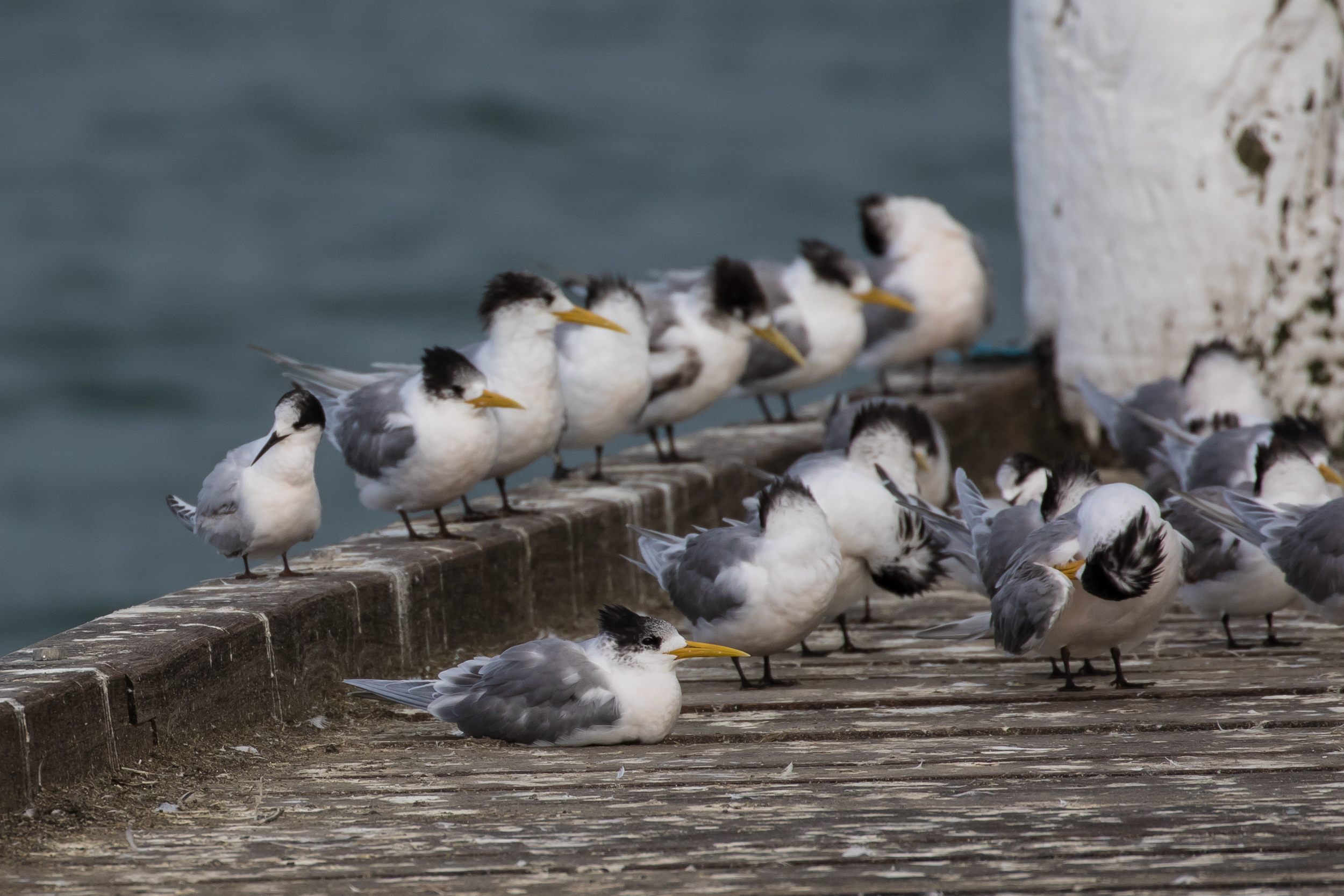
Paul headed to Picaninnie Ponds in search of Azure Kingfisher (he was successful) while Mike and I put in a surprise appearance at Periwinkles for what we’d intended to be afternoon teas but turned into an early but very welcome glass of red wine.
After dinner we had arranged to meet Bob Green yet again, to look for Powerful Owl. Fortunately he was not yet sick of us! There are reputedly one or two pairs that hold territory just make it over the border from Victoria, making this possibly SA’s rarest breeding bird. This scarcity meant we headed out in the dark without high hopes, but in the knowledge our chances were immeasurably higher than in the pub at Port Mac.
Myself, Mike, Paul and Ed Smith — who had joined us after driving down from Adelaide — followed Bob and a friend of his deep into the eucalyptus forest, stopping once or twice to listen and play the call. The weather, which had not been promising, was kind to us, and the breeze had dropped and clouds moved away, revealing a superb starry sky. Amazingly, at our second stop Ed and I both thought we heard a faint response to Bob’s playback. Could it be? A minute or so later, unmistakably now, everyone else heard it, and over the next 10 minutes it got closer! The tensions rose, and we were all primed looking for a moonlight shadow to arrive through the trees. I had seen nothing when Ed, standing a few metres to my right, whispered loudly — “I’ve got it”. Adrenaline rushed and as quickly and quietly as we could we all lined up behind Ed’s shoulder before he switched on his spotlight. Barely 20m away on an open branch a superb Powerful Owl was looking back at us! A great and unselfish bit of birding from Ed who played it perfectly. Of course, because we had low expectations (even having heard the bird I still did not believe we’d see it) no-one was prepared with a camera. Mike was first to move and grabbed his gear from my car — he got back to the spot in time to fire off a single, motion-blurred shot. It flew while he was checking the back-of-camera LCD, and I still had my head buried in the boot grabbing my 7D2. Oh well — the view had been truly outstanding and there was much high-fiving and hugging. Oh, and a Southern Boobook had called as well, but who cares — we’d seen Powerful Owl, a state tick for most of us.
The following morning we returned early to Pick Swamp and repeated our lengthy trudge out to the levee once more, now the 4th time for me and 6th for Mike this year. The Olive Whistler remained very elusive but at least this time I had an awful but tickable view though a tangle of dense vegetation. We also managed to find a Bittern in almost the same spot as yesterday, new for Ed’s year list. At this point Mike and I parted ways with Paul and Ed. Ed needed White-fronted tern for the year so we gave him our gen about the jetty and groyne — a slide-door moment, this one. Mike and I drove to Snow Gum Reserve where we had a nice encounter with a Fan-tailed Cuckoo but saw little else of note, before heading to Mt Gambier for some lunch.
Our plan was to head back fairly early so we could get back to Adelaide still in the light. We took the Coorong route via Millicent, Robe and Kingston, hoping for Intermediate Egret which have been seen in the drains near Robe in the past. In retrospect this was a very low chance given how much standing water there is over the entire region and unsurprisingly we did not find any rarer herons or egrets. Our best encounter was a roadside Common Wombat between Kingston and Salt Creek.
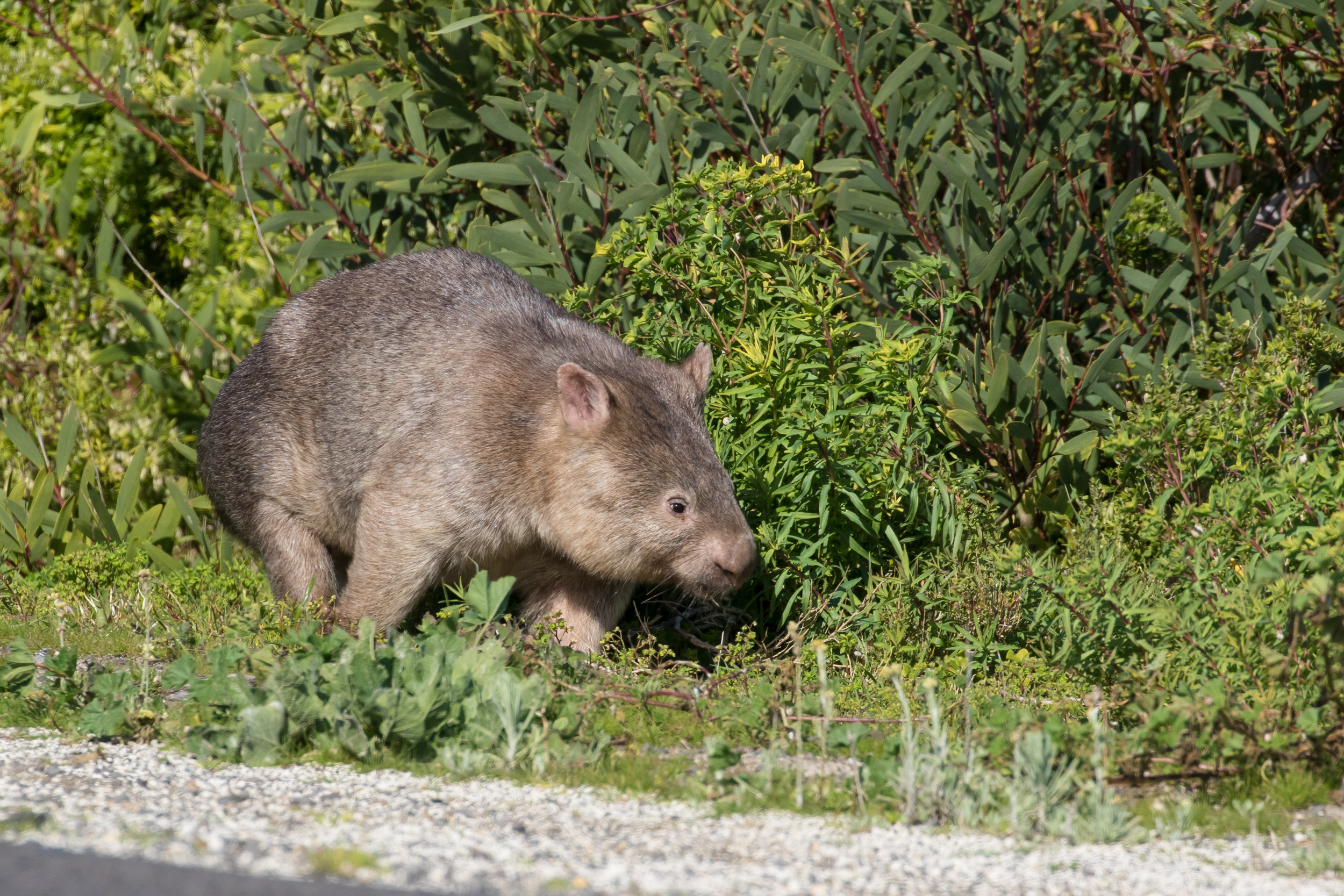
Just out of Kingston, a message and blurry phone pic taken through a telescope came through on our FB Messenger group chat. WTF!!!! Ed had gone to the groyne and got more than he bargained for: there was an adult winter Antarctic Tern with the White-fronteds, easily distinguished by its bright red bill and legs. Wowsers! I looked at the GPS and did a hasty calculation. We were now 2.5 hours north of Port Mac with only just over 2 hours of daylight left. Shit! :-(. My heart sank even further as I realised that Mike had important and unmissable meetings scheduled for Monday morning: we had no choice but to carry on to Adelaide. The next hour of the journey we we were regaled by Ed, various phone-calls telling us how great the views were, evidenced by the outstanding photos Bob Green managed when he arrived from Mt Gambier after being alerted by Ed straight after us. We did our best to suppress our gripped-off-nosity and be excited for Ed, but it was impossible not to reflect on how agonisingly close we had been to a perfect weekend, and that this near miss had flipped a weekend from being fantastic for its unexpected Powerful Owl, to being an unbearable dip.
A few twitchers headed to the site the next morning, including Michael Greenshields who drove from an hour north of Adelaide for more than 6 hours to get there for dawn. He duly got great views. By mid-afternoon I was sweating on the dip and made the mistake of looking at Rex flights to Mt Gambier. I also looked at my calendar and realised for once I’d be able to clear it. A day twitch with flights and rental car was suddenly in the picture (I had only ever done this once before, to find Barrow’s Goldeneye and Bean Geese in Scotland). I tentatively suggested the fly-drive option on #teammike2021 and when I saw a response from Dani: “You guys should go for it”, I knew I needed to book.
Mike and I met at Adelaide airport with a palpable air of expectation. Once we had collected our car and driven to Port Mac it was mid-morning and the excitement was ratcheting up. As we pulled onto the esplanade in Port Mac my first sense of doubt and worry crept in, as we could see straight that there were no terns on either the jetty or the groyne. I was not too concerned, we had plenty of time to cruise back and forth along the coast, and check various possible sites. We few terns of any sort, anywhere; presumably most were out at sea feeding in today’s calmer weather. A quick stop at Danger Point yielded European Greenfinch as a new bird for the year, but having found little up and down the coast we returned to Port Mac for fish and chips for lunch. About a hundred Crested Terns were now roosting on the breakwater about 400m away, so post-lunch we walked to the end of the jetty and spent the next 3 hours of the day scanning the breakwater and scrutinising every tern many times over. Varying counts of White-fronted Terns, ranging from 3 to 7, just about kept interest and hope from completely dying, but as the minutes and hours ticked by, and the cold breeze stung our hands and faces, we gradually resigned ourselves to the dip. At 4.30 we were forced to call it a day so we could make our flight back to Adelaide. A 1000km round-trip to rectify our disappointment from Sunday had just resulted in an expensive and even more disappointing dip.
A couple of days passed and there was no further sign from the very few birders stationed in the south east, but on Friday lunch-time as I contemplated the weekends’ birding plans, my phone rang. “Hey Doc, it’s Mike! The terns are back. Bob Green is looking at them now, and Steve and I have just set out”. I realised it would be impossible for me to get away early today, and spent my remaining meetings with a serious case of FOMO. I even had to deal with a phone call from Bob late afternoon as he called me to say how sweet the afternoon light was on one bird barely 10m away. Thanks mate! Steve and Mike must be close now and would surely enjoy this fabulous encounter too.
However by the time I got home at about 6pm the news had filtered through that they and another birder (Gordon Rich) had arrived after a 5 hour journey a mere 15 minutes after the bird had flown. I could imagine how Mike was feeling — literally sickening. At least they could have a decent crack again tomorrow morning — surely the birds would still be there — but I had a decision of my own to make now. I formed my own plan and resolved to swig a couple of Red Bulls and drive down overnight. It would not even be a lifer — I had actually seen adult summer birds on Stewart Island in 2010 — but it had become personal now!
I set out at 9pm and kept the family informed of my progress with voice-messages of the country town-names I passed through: Yumali, Ki Ki, Coonalpyn, Tintinara, Keith, Willalooka, Padthaway, Naracoorte, Penola, Nagwarry…. At Coonalpyn I pulled over to take a call from Mike. He had news of yet another intriguing twist to the tale: earlier in the day Paul Coddington had posted some pics from our previous weekend onto facebook: “sadly [we] missed the Antarctic Tern that Ed found as I was driving home, in the same place we’d checked the day before and only found White-fronted Tern…”. Mike was calling to tell me about some excited chatter on Paul’s post: this from David W Eades: “You did not miss Antarctic Tern as your 1st tern photo (bird perched on jetty facing right) IS an an Antarctic Tern – a 1st cycle bird in performative moult”.
I eventually rolled into Port Mac at about 2am, the discussion as far as I knew still unresolved. I parked near the jetty and crawled into the back of the Kluger to sleep.
The following morning I met with Mike, Steve, Gordon and a few other birders who travelled from various parts of the state (there would also have been loads of Vic birders there too, no doubt, had they not been locked out because of covid). While the team scanned the groyne and breakwater fruitlessly, I drove up along the coast and found a low-tide roost with 10-12 White-fronted along with dozens of Crested. As I scanned in lovely early morning light I felt sure one would pop out with red bill. My confidence was misplaced.
Mike and Steve had to leave soon after lunch but I stayed ’til dark, finding a Fairy Tern and Pectoral Sandpiper over by the harbour carpark, and a Common Sandpiper (new for the year) in a freshwater drain a few hundred metres back form the beach, but no Antarctics were seen, despite more than a dozen keen pairs of eyes scanning the area for the whole day. As the sun set I finally gave up and began the long journey home. By this time it was more or less resolved that our immature bird from last Saturday was indeed an Antarctic Tern. Before ticking the bird myself I waited to check my own pics with the key id features. But the chat was right, this bird was, in retrospect, unequivocal. Moreover, this will now be Australia’s first mainland record of Antarctic Tern, pipping Ed’s pair of adult winter birds by less than 24 hours.
We had seen it, photographed it, videoed it, even commented to each other that it looked a bit different — and we could ultimately tick it. I personally had wasted a lot of time and money (not to mention left a pretty significant carbon footprint) to dip on a bird I had in fact seen! More to the point, a big part if the reason we go birding is for the excitement and joy of finding something special, but through our own inadequate id skills we had deprived ourselves of what might have been a highlight of our respective birding careers. It was hard not to continue to feel the pain of the dip, even though technically, we had not dipped. Over time, and as I write this blog now, the pain has eased a bit, to be replaced by embarrassment and that nagging sense of disappointment and missed opportunity.
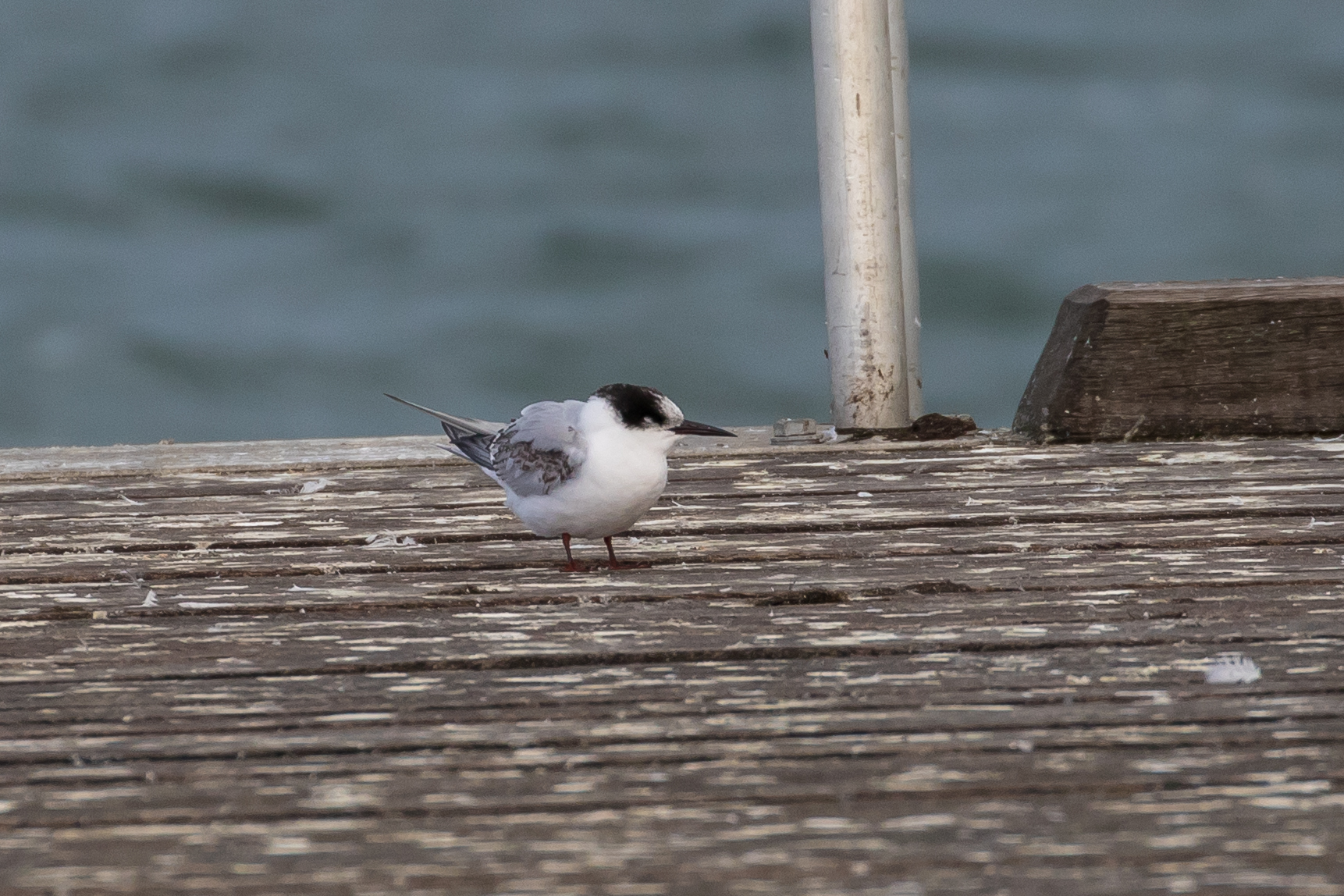

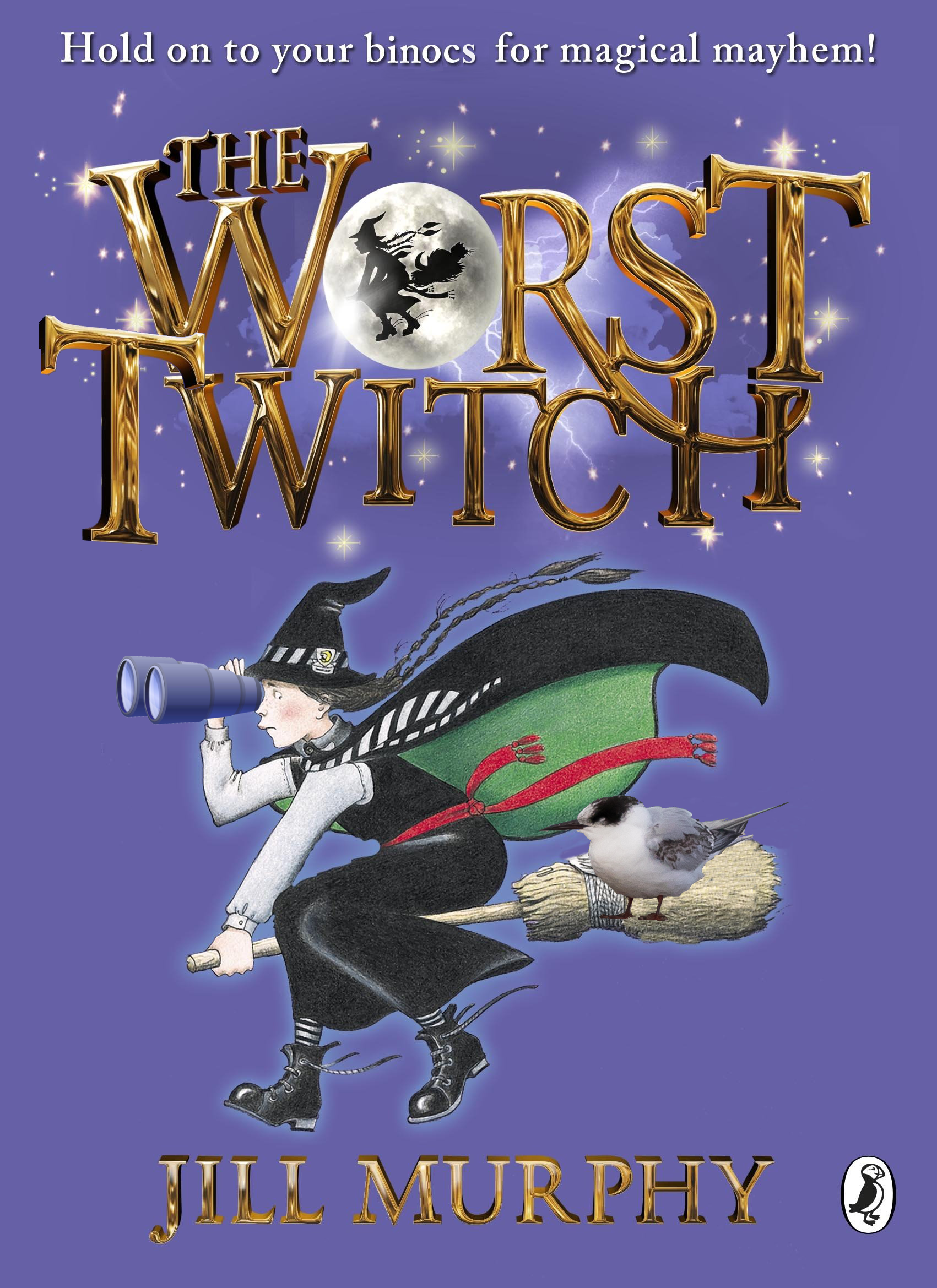
1 Comment
Comments are closed.